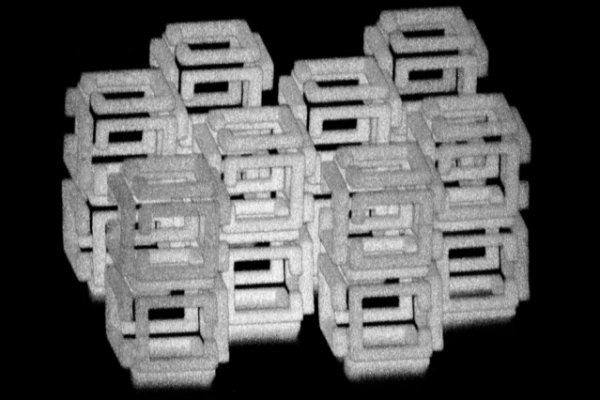MIT Researchers Discovered How to Shrink Objects to 1000th Their Original Size
Tags: opinion

If you’re a fan of Ant-Man, a character from Marvel comics, you’re bound to appreciate this latest innovation from MIT which has made it possible to shrink 3D objects of nearly any shape to one-thousandth of their original size. Reportedly, researchers can also pattern useful materials, such as metals, quantum dots, and even DNA, down to the nanoscale.
MIT News reports that with the new technique, researchers can create any shape and structure they desire by patterning a polymer scaffold with a laser. Once the materials have been attached to the scaffold, the object is shrunk to one-thousandth the volume of the original. “It’s a way of putting nearly any kind of material into a 3D pattern with nanoscale precision,” explained Edward Boyden, senior author of the research and associate professor of biological engineering and brain and cognitive sciences at MIT.
The innovation could come in handy in a number of fields, including optics, medicine, and robotics. Because equipment that many biology and materials science labs are used for the technique, it will also be more widely accessible to interested researchers. “There are all kinds of things you can do with this,” said Boyden. “Democratizing nanofabrication could open up frontiers we can’t yet imagine.”
Over 5000 people have downloaded our free ebook “Growth Hacking Tips And Rituals For Optimal Living” CLICK HERE to get your free copy now
The technique was developed by Boyden and his students. After brainstorming methods to overcome previous obstacles in creating nanostructures, the team decided to adapt a technique that his lab developed several years prior for high-resolution imaging of brain tissue. The former technique is called expansion microscopy and “involves embedding tissue into a hydrogel and then expanding it, allowing for high-resolution imaging with a regular microscope,” reports MIT News. Now, hundreds of research groups in biology and medicine can use the technique which enables 3D visualization of cells and tissues.
When the researchers reversed the process, they learned that they can create large-scale objects embedded in expanded hydrogels and then shrink them to one-thousandth their former size. This technique is called “implosion fabrication.” Both techniques require a very absorbent material made of polyacrylate (commonly found in diapers) as the scaffold for the process. The scaffold is bathed in a solution containing specific molecules which attach to the scaffold when they are activated by a laser light.
MIT News reports, “Using two-photon microscopy, which allows for precise targeting of points deep within a structure, the researchers attach fluorescein molecules to specific locations within the gel. The fluorescein molecules act as anchors that can bind to other types of molecules that the researchers add.” The anchors are then attached “where you want with light, and later you can attach whatever you want to the anchors,” explained Boyden.
Said graduate student Samuel Rodriques, one of the lead authors of the paper: “People have been trying to invent better equipment to make smaller nanomaterials for years, but we realized that if you just use existing systems and embed your materials in this gel, you can shrink them down to the nanoscale, without distorting the patterns.” The MIT team is now exploring potential applications for the technology.
By Amanda Froelich / Truth Theory
IMAGE CREDIT: Daniel Oran
Leave Comment: